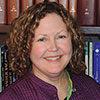Tap Into the Benefits of IFT Sections and Divisions
PRESIDENT’S MESSAGE
I joined IFT as a student in 1986. Back then, I was a member of the Longhorn Section and Nutrition Division. Over the years, I have enjoyed the breadth and depth of the regional and technical diversity that IFT has to offer. My job and my interests have changed during my professional career, and IFT has always provided me with opportunities to grow my knowledge and professional networks.
We do sometimes refer to internal IFT jargon too much. New members could find our wording confusing, so I am attempting to clarify our overall organization this month.
Sections are geographically based communities that connect members with other food science and technology professionals in their region. IFT has 52 sections. (This should be a College Bowl question!) Several sections are located outside of the United States. In the past year, our sections sponsored more than 200 awards and scholarships that invested almost $400,000 to recognize achievements and support future generations of food scientists. Sections organized over 250 events for members in the last year—from Suppliers’ Nights, technical sessions, and philanthropic activities to gatherings designed for new professionals and students.
IFT partnered with two sections to host FutureFood 2050 events this spring. The Chicago Section held a documentary viewing event in March with director Scott Hamilton Kennedy. Members watched his Academy Award–nominated film, The Garden. During a question and answer session after viewing the film, members asked him about the making of that documentary as well as the one he is currently producing for IFT that has the working title Food Evolution. At a New York IFT Section event in April, Julie Meyer of Eat Well Global moderated a panel discussion with three experts, Rickey Yada of the University of British Columbia, Marie Wright of Wild Flavors, and Kaitlin Yarnall of National Geographic magazine. They discussed the misperceptions about food science and the consumer challenges that new technologies face.
Section newsletters and websites are full of the latest local news for food professionals. If you have recently moved to a new area and are looking for a way to connect with people, then consider attending a local section event. IFT sections offer a great way to network with other food professionals. You will get to know members that you can call on when you have a question that only a fellow food professional can answer and build friendships that will last a lifetime. If you are interested in joining a section near you, please review the complete listing of all of IFT’s sections on ift.org, and if you have additional questions, you can email them to [email protected].
IFT’s divisions are our centers of scientific and business knowledge. Divisions have provided me with wonderful opportunities to develop my leadership and technical skills. I helped start the Food Chemistry Division, and it gives me great pleasure to see how that group evolves as food chemistry issues shift. Divisions foster a welcoming and inclusive community and nurture the next generation of leaders. IFT has 24 divisions, which are comprised of IFT members interested in a specific area of food science and technology and who are active in our online community, IFT Connect. As an IFT member, you can join an unlimited number of divisions at no additional cost. Benefits of participation include news, discussions, and resources via IFT Connect, social events, competitions, awards, and leadership opportunities. In addition, members of IFT divisions are consulted for their expertise on various IFT initiatives.
Our divisions continue to generate member value by providing hundreds of educational activities and sponsoring social gatherings at the annual meeting. Divisions have continued to grow their online content and community. They have held more than 300 discussions and are presenting 10 webcasts this year. We have 23 division competitions at IFT15. Students can submit an abstract during the call for papers in the fall and indicate that they would like to join a competition. Each division recognizes up to six finalists and gives one first place award of $1,000, a second place award of $750, and a third place award of $500.
Division leadership terms begin the day after the annual meeting and extend through the following annual meeting. Go to divisions under the community tab on ift.org to join a division. Division leaders welcome new volunteers to help judge student abstracts, plan technical sessions, and participate in scientific as well as social activities. I encourage you to become more involved in an IFT section or division this year.
 Mary Ellen Camire, PhD, CFS,
Mary Ellen Camire, PhD, CFS,
IFT President, 2014–2015
Professor, Univ. of Maine,
Orono, Maine
[email protected]
